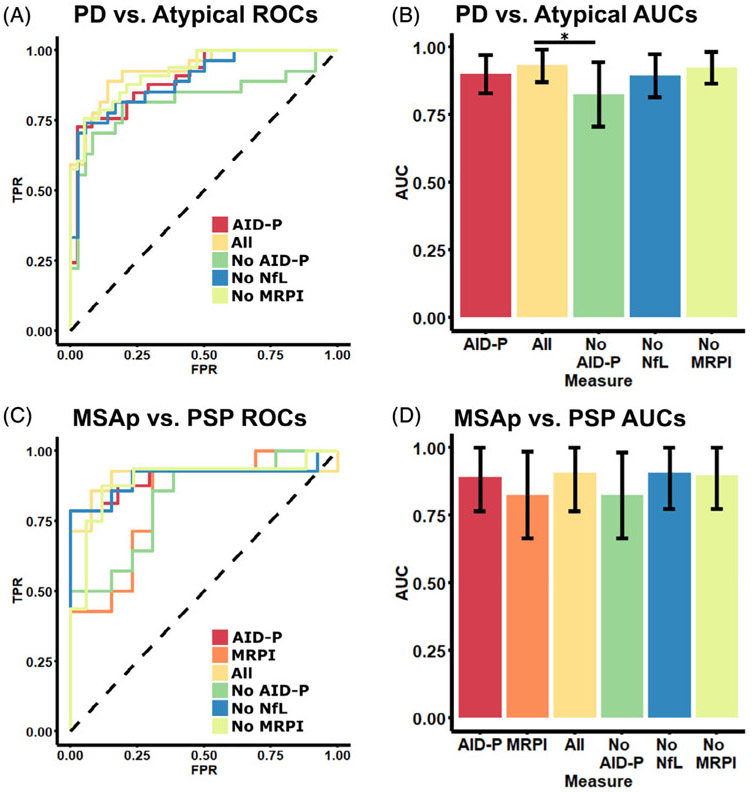FIG. 2.
Multimodal classification of disease state using AID-P, MRPI, and NfL. The best-performing models from the unimodal analyses were compared to multimodal classification. For PD versus MSAp/PSP (A,B), the best unimodal performance was found for the AID-P (red). The AID-P measure was compared with a model with all metrics (yellow, AID-P, MRPI, and NfL). Each measure was then iteratively removed from the “All” model to create 3 different bimodal models (green, no AIDP; blue, no NfL; green-yellow, no MRPI). This was repeated for the MSAp versus PSP (C,D) comparison in which the unimodal MRPI model was included as it performed similarly to the AID-P model. *Significance at P < 0.05 and error bars represent 95% confidence intervals. AID-P, Automated Imaging Differentiation in Parkinsonism; AUCs, areas under the curve; FPR, false positive rate; MRPI, Magnetic Resonance Parkinsonism Index; MSAp, multiple system atrophy parkinsonian variant; NfL, neurofilament light chain protein; PD, Parkinson’s disease; PSP, progressive supranuclear palsy; ROCs, receiver operating characteristics; TPR, true positive rate.

